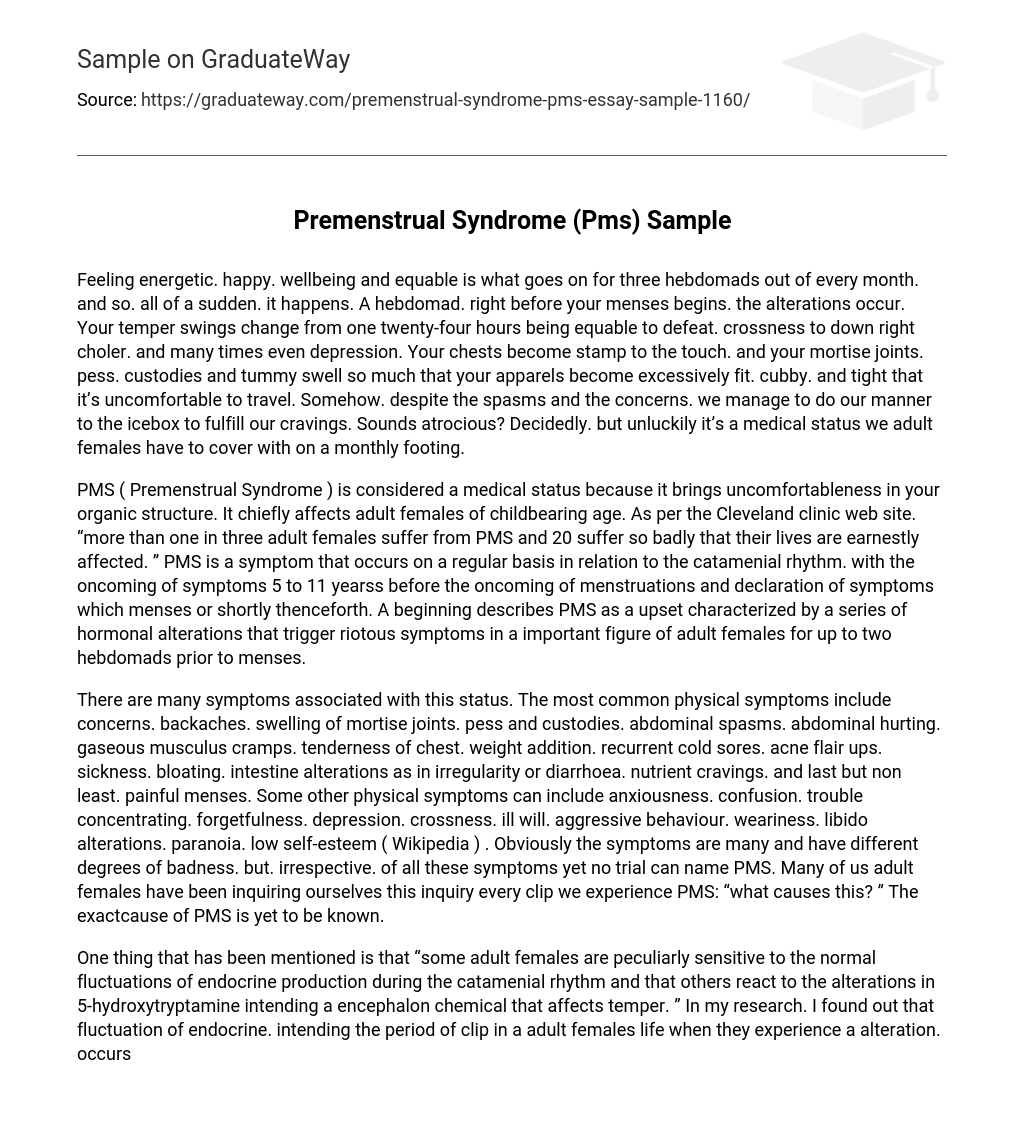Feeling energetic, happy, and well-balanced is what happens for three weeks out of every month, and then suddenly, it happens: a week before your period begins, the changes occur. Your mood swings change from one day being equable to feeling defeated, irritable to downright anger, and many times even depression.
Your breasts become tender to the touch, and your ankles, feet, hands, and stomach swell so much that your clothes become too tight, chubby, and uncomfortable to wear. Somehow, despite the spasms and the headaches, we manage to make our way to the refrigerator to satisfy our cravings. Sounds awful? Definitely. But unfortunately, it’s a medical condition we women have to deal with on a monthly basis.
PMS (Premenstrual Syndrome) is considered a medical condition because it brings discomfort to your body. It mainly affects women of childbearing age. According to the Cleveland Clinic website, “more than one in three women suffer from PMS, and 20% suffer so badly that their lives are seriously affected.
” PMS is a symptom that occurs regularly in relation to the menstrual cycle, with the onset of symptoms 5 to 11 days before the onset of menstruation and resolution of symptoms when menstruation occurs or shortly thereafter. A source describes PMS as a disorder characterized by a series of hormonal changes that trigger disruptive symptoms in a significant number of women for up to two weeks prior to menstruation.
There are many symptoms associated with this condition. The most common physical symptoms include headaches, backaches, swelling of ankles, feet and hands, abdominal cramps, abdominal pain, gaseous muscle cramps, tenderness of the chest, weight gain, recurrent cold sores, acne flare-ups, nausea, bloating, bowel changes such as constipation or diarrhea, food cravings, and last but not least, painful menstruation.
Some other physical symptoms can include anxiety, confusion, difficulty concentrating, forgetfulness, depression, irritability, aggression, fatigue, libido changes, paranoia, and low self-esteem (Wikipedia). Obviously, the symptoms are many and have different levels of severity, but regardless of all these symptoms, yet no test can diagnose PMS. Many of us women have been asking ourselves this question every time we experience PMS: “what causes this?” The exact cause of PMS is yet to be known.
One thing that has been mentioned is that “some adult females are peculiarly sensitive to the normal fluctuations of endocrine production during the catamenial rhythm, and that others react to the alterations in 5-hydroxytryptamine, intending a encephalon chemical that affects temper.”
In my research, I found out that fluctuation of endocrine, intending the period of time in a woman’s life when they experience a alteration, occurs chiefly during menses, gestation, and climacteric. Scientists believe that it might have to do with the ovarian rhythm and how it diffuses to make the proper alteration while forcing your body to habituate to these alterations. This more than likely causes all of these symptoms.
On the other hand, some believe that the hormonal estrogen levels have something to do with this medical condition since the female hormone estrogen starts to rise after menses and peaks mid-cycle, which then quickly drops but only to slowly rise and then fall again in the time before menses. Despite frequent neurological, physical, emotional, and mental testing done, assumptions are the way PMS is diagnosed.
As women, our bodies face their ups and downs, mainly the point in time of this barbarous medical condition, premenstrual syndrome better known as PMS, having no cause or declaration. We have come merely to learn to live with it and ease the pain and discomforts. Several suggestions to try to cope with PMS or even try to reduce pain and discomfort, good nutrition and having a well-balanced diet can alleviate symptoms of PMS.
One suggestion is to eat fruits and vegetables, and whole grains but avoid excess salt, sugar, caffeine, and alcohol, particularly when experiencing PMS symptoms. Also, taking vitamins, exercising by walking, cycling, swimming, or any aerobic activity. Ironically enough, women experience just too much pain while experiencing PMS symptoms, and the last thing on their minds is to manage to get up and exercise. Stress reduction is another way to relieve symptoms.
As hard as it may seem nowadays to live a stress-free life, for women, it is crucial to relax. Even the smallest gesture of a bubble bath can go a long way. Lots of rest is important too. Lastly, there is always over-the-counter pain relievers such as aspirin and ibuprofen or prescribed medication if you have severe pain, depression, or anxiety.
Is PMS (premenstrual syndrome) a medical condition? Most definitely, because it causes discomfort in women’s bodies and produces symptoms that us women need to learn to cope with. All these facts about PMS are an experience of an exaggeration of normal function which we may not be able to get rid of, but for which there is treatment such as exercising, eating right, and many others. Many medical conditions are never cured, just treatable, and PMS falls into that category.





